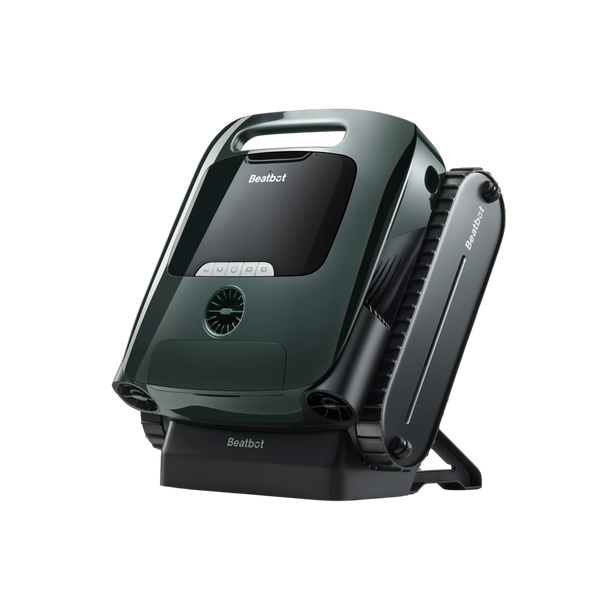Pump Schedule 101: How Often to Run Your Pool Pump for Best Results
Got a murky pool despite running your pump constantly? Or maybe your energy bill shot through the roof from that shiny new pool pump? You're not alone. Pool owners everywhere wrestle with finding that perfect pump schedule - and today we're fixing that headache once and for all.
Here's the kicker: your pool pump schedule affects everything from water clarity to your monthly power bill. Skip the guesswork and dive into the real science behind keeping your pool pristine without breaking the bank.
Table of content

The Truth About Pool Water Turnover
Picture this: every drop of your pool water needs to pass through your filtration system to trap dirt and contaminants. We call this process "turnover," and it's the backbone of pool maintenance. Most pool pros swear by the one-turnover-per-day rule, but here's what they don't tell you upfront.
Your pump shouldn't run 24/7. That's just washing money down the drain. Tests show that pushing all your pool water through the filter takes between 8-10 hours. Running longer? You're just burning electricity. Running shorter? Those pesky debris particles keep floating around, turning your pool into a cloudy mess.
The magic happens when water moves through your filter at the right speed. Too fast, and particles slip right through. Too slow, and they settle back to the bottom before hitting the filter. Think of it like brewing coffee - you need just the right flow rate to get that perfect cup.
Match Your Runtime to Pool Size
Let's cut through the confusion about pump runtime. Your pool's size dictates everything - it's that simple. But don't just take our word for it. Look at the numbers:
Small pools under 15,000 gallons work best with 6-8 hours of pump time. These compact pools circulate faster, so you'll save big on power bills by not overdoing it. Medium-sized pools between 15,000-30,000 gallons need a solid 8-10 hours to turn over completely. Got a monster pool over 30,000 gallons? Plan for 10-12 hours of pump time to keep things crystal clear.
But here's something pool companies rarely mention: these times aren't set in stone. Your actual needs might vary based on factors like tree coverage, wind exposure, and swimmer load. Start with these baselines, then tweak based on your pool's response. Watch how your water clarity holds up - that's your best guide for fine-tuning the schedule.
Peak Hours vs Off-Peak: When to Run Your Pump
Ready to slash that power bill? Your pump's runtime timing matters more than you'd think. Most power companies jack up rates during peak hours - typically 9 AM to 9 PM. But flip that schedule around, and you'll watch your energy costs plummet.
Breaking up your pump's runtime into two sessions maximizes efficiency and savings. Fire up that pump between 4-8 AM to prep your pool for the day ahead. Then kick off a second round from 8 PM to midnight to clean up after everyone's done swimming. This split schedule keeps your water pristine while your wallet stays heavy.
Know what's even better? This schedule perfectly matches your pool's natural cleaning needs. Morning runs clear out any overnight debris, while evening sessions tackle the day's accumulated dirt before it settles in for good.

Energy Saving Tips
Modern pool ownership doesn't have to drain your bank account. These proven tricks slash power consumption without sacrificing water quality:
- Install a timer - Stop babysitting your pump. A quality timer pays for itself in months through precise runtime control.
- Switch to variable speed - These pumps cost more upfront but cut power use by up to 80%. Plus, they run whisper-quiet compared to single-speed models.
- Keep filters clean - Clogged filters force your pump to work harder. Monthly cleanings maintain peak efficiency.
Seasonal Adjustments Matter
Pool maintenance isn't a set-it-and-forget-it game. Your pump needs change dramatically with the seasons. Miss these adjustments, and you're either wasting power or risking water quality.
Summer Schedule
When temperatures soar past 85°F, your pool faces new challenges. Crank up runtime by 2-4 hours when:
- Heavy swimming sends more contaminants into your water
- Hot temperatures speed up algae growth
- Storms dump leaves and debris into your pool
Winter Schedule
Why waste energy when your pool sees less action? Scale back pump time by 25-40% during cooler months. This makes sense when:
- Water temperatures drop below 65°F, slowing chemical reactions
- Your pool cover blocks most debris
- Swimming sessions become rare
The key? Stay flexible with your schedule. Your pool tells you what it needs through water clarity and chemical balance. Listen to those signals and adjust accordingly.
Warning Signs of Inadequate Pump Time
Think your pump schedule needs tweaking? Your pool sends clear signals when something's off. That sparkling blue water turns cloudy fast when filtration falls short. Worse yet, stubborn algae patches pop up on walls, especially in those shady corners your pump struggles to reach.
Watch the pool floor closely. Notice debris settling instead of heading to the skimmer? That's a red flag. If your filter pressure swings wildly between cleanings, your pump might need more runtime to handle the load.
Here's what catches most pool owners off guard: chemical readings can look perfect while circulation problems lurk beneath the surface. Don't let good test results fool you into cutting pump time too short.
Monitor and Adjust
Skip the one-size-fits-all approach. Your neighbor's perfect schedule might spell disaster for your pool. Test those water parameters twice weekly - this reveals the real story about your pump's performance.
What makes a winning schedule? Crystal clear water and steady chemical readings tell you you're on track. But don't stop there. Keep notes on how your pool responds to schedule changes. Sometimes tiny tweaks make huge differences in both water quality and power bills.
Pro tip: Download a pool maintenance app to track changes. This helps spot patterns you might miss and makes adjusting your schedule way easier.
Special Situations That Need More Pump Time
Life throws curveballs, and your pool pump schedule needs to roll with them. Added chemicals? That pump needs extra hours to distribute them evenly. Those summer storms that dump leaves and dirt require bonus runtime too.
Fighting an algae outbreak? Crank up filtration until you win that battle. Pool parties create extra demands - plan for extended pump time both during and after the splash fest.
Remember this golden rule: temporary pump boosts beat long-term problems every time. Just dial things back to normal once the situation clears up.
The Bottom Line
Your pool pump schedule makes or breaks your swimming season. Start with our guidelines, but don't be afraid to experiment. Watch how your pool responds and trust your eyes - they tell you more than any manual ever could.
Keep testing, stay flexible with adjustments, and remember that perfect balance between clean water and energy savings takes time to find. Your reward? A pristine pool that doesn't empty your wallet.
Questions about fine-tuning your pump schedule? Drop them in the comments below. Our pool pros love helping fellow owners crack the code to perfect pool maintenance.
Relative Blogs
About the author



















